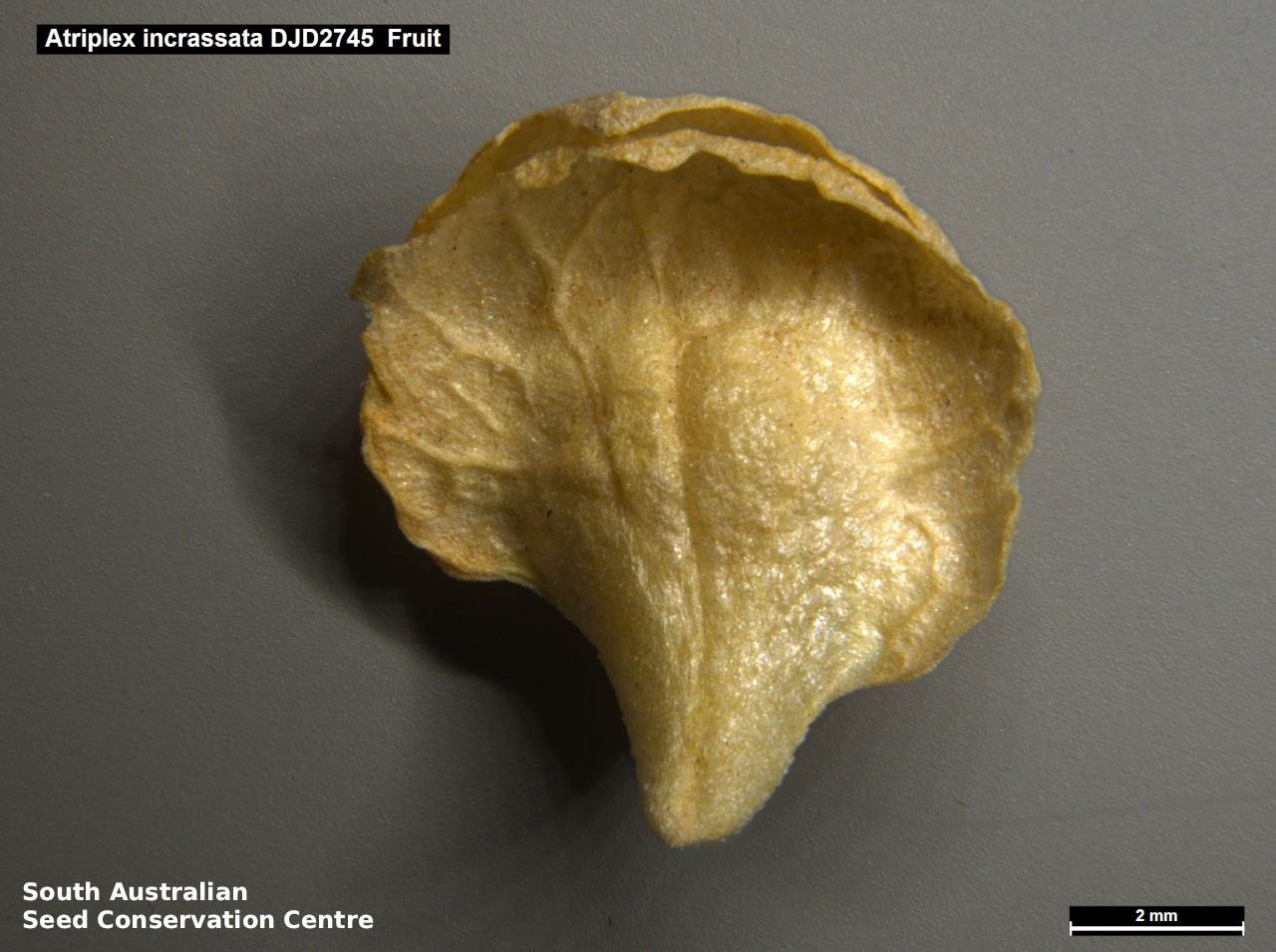













Prior names
Atriplex nummularia ssp. omissa
Atriplex cinerea ssp. incrassata
Common names
Oodnadatta Saltbush
Etymology
Atriplex from the Latin 'atriplexum' meaning an orach, a saltbush, an Ancient Latin name for this plant. Incrassata from Latin 'incrassatus' meaning thickened, referring to the thickened fruit base.
Distribution and status
Found mainly in South Australia, north of Lake Torrens. Also found in Northern Territory and Queensland. Native. Common in South Australia. Rare in other states.
Herbarium regions: Lake Eyre, Gairdner-Torrens, Flinders Ranges
AVH map: SA distribution map (external link)
Plant description
Intricately branched shrub to 1m high. Leaves ovate-deltoid, sinuate-dentate; truncate or slightly cuneate at the base, with a thin scaly covering on both surfaces, with the lamina to 20mm long. Male flowers in disjunct or continuous glomerules to 5mm wide and forming slender spikes or panicles. Female flowers in dense disjunct glomerules arranged in open leafy panicles. Fruits are pale brown papery fruit to 10mm long and wide, with valves smooth, entire or bluntly denticulate; free to near the base, hard, ultimately thickened and convex except for the papery reflexed margin. Seeds are brown reniform seed to 3mm long and 2mm wide. Seed embryo type is peripheral.
Seed collection and propagation
Collect seeds between June and August. Collect fruits that are starting to turn pale brown, drying off and papery. Fruits can be collected directly from the bush or from the ground underneath. Place the fruits in a tray and leave to dry for one to two weeks. No cleaning is required if only the fruits are collected. The seed can be stored in the fruit or can be clean further. Rub the fruit gently by hand to dislodge the seeds. Use a sieve to separate the unwanted material. Store the seeds with a desiccant such as dried silica beads or dry rice, in an air tight container in a cool and dry place.
| Location | No. of seeds (weight grams) | Number of plants | Date collected | Collection number Collection location | Date stored | % Viability | Storage temperature |
|---|---|---|---|---|---|---|---|
| BGA MSB | 4,100 (77.5 g) 4,100 (77.5 g) | 30+ | 9-Sep-2013 | DJD2745 Gairdner-Torrens | 24-Mar-2015 | 60% | -18°C |
Number of plants: This is the number of plants from which the seeds were collected.
Collection location: The Herbarium of South Australia's region name.
% Viability: Percentage of filled healthy seeds determined by a cut test or x-ray.